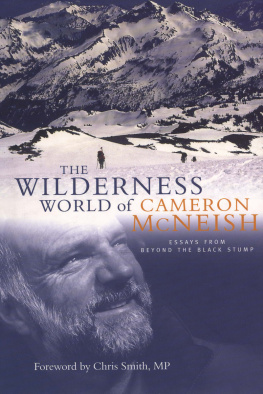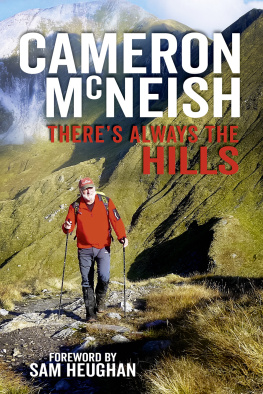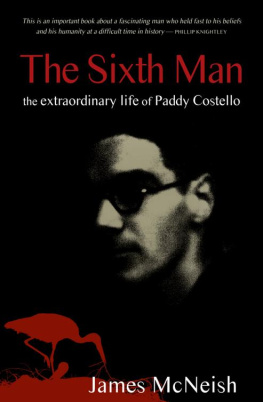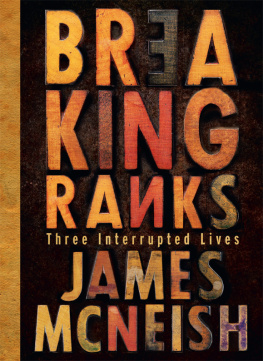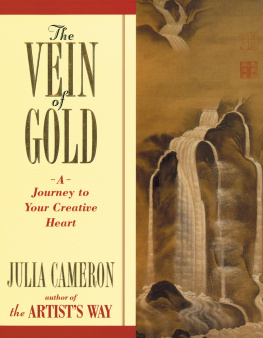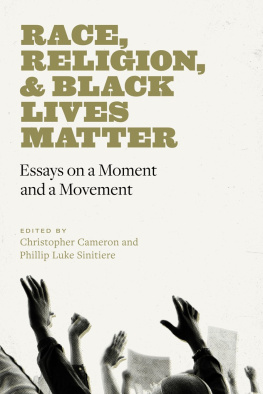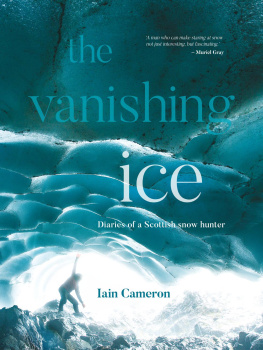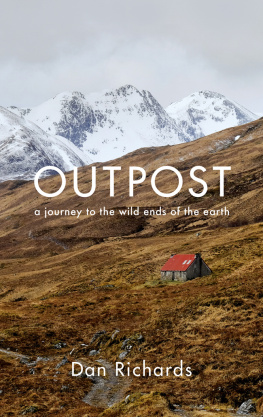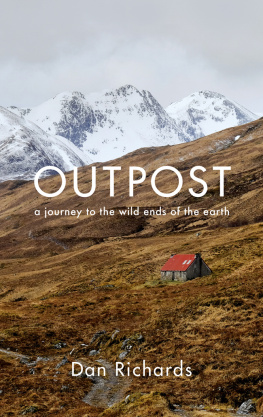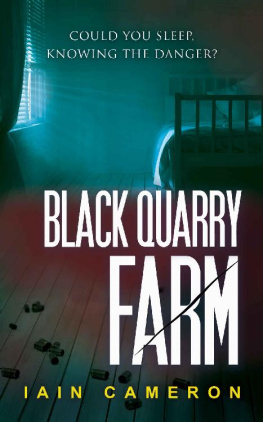FOREWORD
T he ridge from AChioch to Ben More on the island of Mull is a steep, rocky and immensely enjoyable route to the summit of one of Scotlands finest mountains. You clamber round and over rock outcrops; you catch your breath as a bird of prey efffortlessly soars overhead; you stride along a ridge with sweeping slopes and corries beside you; and you arrive at the summit with the sea glinting in the sunlight and the whole of Scotlands western seaboard spread out across the horizon. It was a few years ago that I last made this journey, together with Cameron McNeish. We were filming a walk across Mull for the Wilderness Walks series; and our walk ran the whole range of sun, rain, mist and snow, whilst we covered steep hillsides, long and empty glens, and some of the wildest and most desolate moorland you will find anywhere. We crossed one single-track road in the entire journey.
Experiencing the wilderness of mountain and corrie, of moorland and wide empty spaces, is an essential part of discovering both our humanity and our spirituality. In this book Cameron McNeish takes us by the hand and leads us through a series of such experiences. Rooted firmly in an abiding love for his homeland of Scotland, he ranges with us across the world too. We learn what it is to feel small, to be humble, to sense the proper perspective of our place in a vast world, to experience fear. And we also learn what it is to be enchanted and uplifted and to feel through the physical encounter with wild nature to something much deeper.
There could be no better guide than Cameron. He is passionate about the wilderness. He knows the hills better than anyone. His journey takes us to some familiar places, like the quartzite ridges of Beinn Eighe or the great sweeping dome of Beinn Macdui or the plunging waterfall of the Grey Mares Tail in the Border hills. He surprises us with the unfamiliar, too, in the rock-strewn jumble of hills that makes up the heart of Knoydart or the sunshine mountains of southern Spain. This is a book for savouring memories, for culling ideas, for stopping for a moment to think.
To stand on a high mountain with corries and ridges and far horizons all around you; to listen to the distant roaring of water; to see the sea glistening in the west; to perceive the world in a tiny delicate flower or a crag-lined peak rearing out of the mist: this is the stuff of wilderness. This book helps us to touch it and to treasure it. What is more, it helps us to understand it.
Rt Hon Chris Smith, MP
April 2001
ACKNOWLEDGEMENTS
M y name might grace this books title but there is a huge supporting cast. A wilderness world might suggest a pretty solitary existence, a place lacking in human company, but even as someone who more often than not walks alone, backpacks alone and scribbles alone Im very aware that over the years I have grasped, with varying degrees of gratitude, the ideas, philosophies and advice of many individuals. Without their input my wilderness world would have been a harsher, poorer place.
First of all warmest thanks go to Peter Lumley and Roger Smith who, all those years ago, had enough confidence to allow a wet-behind-the-ears but enthusiastic young mountain writer access to the pages of their outdoor magazines. Both are firm friends to this day. In the broadcast media I owe thanks to the late Murdoch MacPherson, Christopher Lowell and Neil Fraser of the BBC and to Richard Else of Triple Echo Productions, my producer and director on the BBC2 Wilderness Walks television series.
Even in such solitary activities as backpacking, mountaineering and wilderness travel we are rarely removed from the inspiration of those who pounded the trails and climbed the hills before us. Such inspiration, and much encouragement, has come from my peers too, fellow hill-goers, colleagues and co-protagonists in the ongoing battles for the protection of our wild places.
Individuals like Tom Weir, the late Bill Murray, Hamish Brown, Jim Perrin, Chris Townsend, Chris Brasher, Jim Crumley, Dick Balhary and Dave Morris here in the UK, and Ray and Jenny Jardine and Annie and Dave Getchell in the US, have all given freely of their knowledge and experience to make this writers time in the wild places so much more meaningful. Tim Greening, Glen Rowley and Rex Munro of KE Adventure Travel have helped expand my horizons to some of the more remote corners of the planet.
For permission to plunder and re-work various features I have written for their newspapers over the past few years Im indebted to Ken Smith of the Strathspey and Badenoch Herald and Andrew Jaspan of the Sunday Herald and to the authors of all those books mentioned in the bibliography who have, to a greater or lesser degree, inspired, motivated, enthralled and challenged me. My friend and colleague John Manning has given the tremendous benefit of his copy-editing skills and once again Neil Wilson has shown a confidence in my ability to produce a book that Im not sure Ive ever really warranted. May his faith be rewarded
Sincere thanks go to Chris Smith, who escapes from the smoke-filled corridors of power whenever he can to enjoy the delights of highland hills, for taking time from a particularly hectic schedule to write the foreword to this book. I am indedted to him. To my good friend and neighbour John Hood I want to give a special thanks for his enduring patience when my writing projects have largely determined the destination of so many of our mountain trips together, and Im so aware that the mountain-bum lifestyle I enjoy so much could never have been possible if it hadnt been for the forbearance and serenity of my wife Gina who, Im delighted to say, has enthusiastically embraced the mountain-bum lifestyle herself in recent years.
Cameron McNeish
INTRODUCTION
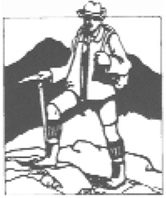
A SONG WORTH SINGING
I t was cold and crisp this morning, with a vibrant freshness that suggested winter had well and truly arrived. A pall of smoke hung above the village, suggesting a stirring of life in these early wintry hours. A limp haze hung over the river valley and softened the harshness of the frosty scene. The river itself was unusually pensive, subdued, its higher tributaries probably frozen and choked with ice and snow.
But on the middle ground, on the high moors, the streams and burns still sang their songs and I wanted to march to their tune. Here was a light-hearted mood, a light classical gaiety, and I would match my stride to their whim. I was, as always on this daily walk, expectant, and I wasnt to be disappointed. The sense of elevation, the rhythms, the infinite variety of natural colours combined to create a very special melody. Whatever the rest of the morning brought I knew I would march to the greatest rhythm on Earth, the heartbeat of the land.
Music is a gift that the native cultures of Australia suggest we owe our very existence to and its intriguing that the aborigines believe their ancestors sang the world into being. The songs their ancestors sang created the land itself and the animals, the birds and plants. Even today native Australians go walkabout in the outback to experience what they call the songlines, singing the old songs and tunes and thereby continuing the very essence of creation.
Similarly, the North American native culture gave importance to the chants and rhythms of their tribal songs, singing to the plants and the beasts before harvesting or hunting. In the 7th century, Caedmon, who is remembered in Poets Corner in Westminster Abbey as the first poet of Anglo-Saxon England, once had a dream when he was a young man working in the stables and gardens of the Abbess Hilda of Whitby. In this dream he was told by an angel to lift his voice and sing, and when he meekly enquired what he should sing he was commanded to sing of the glories of creation! In a sense thats what this book is all about.

